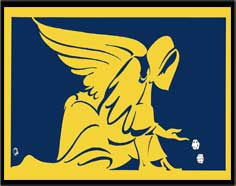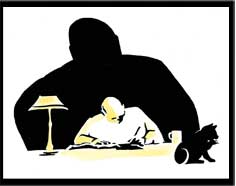The nexus between Australia and organised crime operations in America has been brought home in dramatic fashion to the Government of the United States.
In 1982, President Ronald Reagan launched an all-out assault against the kingpins behind America’s drug trade. Allocating more than $200 million, and employing more than 1000 extra agents, he set up presidential task forces aimed at ‘crippling the power of the Mob in America’.
The trail for the very first target ended in Australia.
Originally code-named Operation Jackpot, it has since been referred to as Operation Moneybags in a report to the American Congress. The operation resulted in indictments involving nearly $US1 billion.
For Operation Moneybags, a presidential team headquartered in South Carolina linked up with the Australian Federal Police, as well as authorities in Hong Kong and the Bahamas.
It has been hailed in America as a breakthrough in the investigative technique of ‘following the money trail’, a principle pioneered in Australia in the late 1970s by Mr Justice Philip Woodward, when he conducted the NSW Royal Commission on drug trafficking.
With 2876 miles of coastline, South Carolina was known to be a haven for drug smugglers. Nobody had been able to find out who was organising the smuggling.
There was no suspect list, no files, not even a lead.
So, instead of trudging through marshes waiting to catch smugglers landing their boats, agents simply concentrated on following the trail of money. Mercedes Benz dealers were contacted to find out who had bought expensive cars for cash. Real estate agents were visited to discover buyers of condominiums and resort land who had paid in full with cash or cheque. Developers revealed who was building on waterfront land, with docks able to accommodate boats at high and low tide. Of course, the same names kept cropping up.
One federal agent, David Forbes, recalls driving down a highway with a colleague, asking: ‘What in the world are we going to do? They just told us to go out there and find them.’ He adds: ‘We threw out the book and decided to be innovative. We weren’t covert at all. We flashed our badges in their faces and said, “Here we are.” We put a lot of pressure on people. And we went for the paper trail. Papers don’t lie.’
Ultimately they identified two major syndicates which had at times acted in concert to smuggle drugs from Jamaica, Colombia, the Bahamas and Lebanon.
The paper-and-money trail led from South Carolina to the Caribbean, to the Channel Islands off the coast of England and France and finally to Sydney, Australia, where two of the alleged ringleaders were arrested in the fashionable suburb of Whale Beach.
One of them, Robert Leslie Riley, aged 40, was described as a ‘Mr Big’ in extradition proceedings in a Sydney court. The other, Wallace Edward Butler, aged 53, was described as Riley’s lieutenant. Indictments against Riley alone involve alleged smuggling of drugs worth more than $400 million from Lebanon and Colombia.
After their arrest by Australian Federal Police (AFP) on 5 May 1983, Riley and Butler sat it out for two years in Sydney’s Long Bay jail, fighting extradition proceedings through Australian courts. Their lawyers took their case through every process up to the High Court. They lost — and were extradited.
Whenever they went to court, the American Government flew out special agents and lawyers. Security was extraordinary. Every person, even the magistrate, was searched by police. Police helicopters hovered above the court house, while police with automatic shotguns and two-way radios were stationed inside the courtroom.
Though the proceedings received scant mentions in the Australian media, a special prosecutor provided by the Australian Government, Greg Smith (now attached to the National Crime Authority), pointed out that it is the ‘biggest drug operation ever mentioned in an Australian court’.
In American newspapers, Riley and Butler were referred to as ‘kingpins’ of the drug smuggling operation, and reports noted that they had hired a former Attorney-General of Australia, Mr Tom Hughes, QC, ‘for $4000 a day to fight their extradition’.
Evidence was given that Riley arrived in Australia with $20,000 cash in an airways bag, saying he intended to spend the money during a six-month stay. When arrested, he had a Nova Scotian bank account showing a credit balance of $158,000. But it has been alleged that he had access to $15 million in other bank accounts in Switzerland, the Bahamas and the Channel Islands.
Evidence was also given that police suspected he might have transferred large sums of money to Australia.
Less than three weeks before his arrest in Sydney, Riley had established a company in Victoria called Auscat Pty Ltd. Riley’s name does not appear on any company documents but exhibits tendered in court showed that Riley held pre-signed letters of resignation from two Australians put up as directors. According to the court records, Riley held their resignations through a Melbourne barrister who incorporated the company.
The two Australians listed as directors were Graeme John Reilly, a yachting adventurer, of Brighton, Victoria, and a Sydney woman, Sheryl Gay Abrahmsen, of Newport, NSW.
Reilly featured in a 60 Minutes television special in July 1982, when filmed on board a Second World War vessel, The Sea Victory, operating between Cyprus and Beirut. The vessel was being used at the time to take refugees out of war-torn Lebanon. In an interview with Jana Wendt, Reilly told of ‘helping out’ on the boat, because he had ‘business’ in Beirut.
‘Oh, yes,’ he said, ‘I suppose we made arrangements in earlier days to assist in their particular problems.’
Wendt: Supplying arms?
Reilly: That’s what I said . . . their particular problems.
Wendt: In one sense, you’re supplying the tools of their battle, and then taking out the refugees from the battle?
Reilly: Yes.
Wendt: Don’t you have any qualms about that?
Reilly: Not at all. Why should one?
Altogether, American authorities named a total of 129 suspects involved in Operation Moneybags. Nearly all were tracked down and convicted by American courts, receiving sentences of up to 25 years’ jail and fines of up to $100,000.
Most pleaded guilty. As explained by US attorney Henry McMaster, who headed the operation: ‘Lawyers took one look at 21,000 pages of documents and charts, left the courtroom and returned with their clients ready to plead guilty.’
McMaster, who personally took charge of inquiries in Australia in conjunction with Detective Ray Tinker and other officers of the Australian Federal Police, said the American Government had no hesitation in outlaying millions of dollars on worldwide inquiries, including about $1 million pursuing the Australian end. Confiscation of assets seized, including houses, land, cars, boats, shares and other valuables, had returned more than $US14 million.
In a public statement released in America, McMaster said the arrests of Riley and Butler would not have been possible ‘without the splendid work of the Australian Federal Police . . . These officers have worked tirelessly to assist the United States Government in this case, and we owe them a great debt of thanks’.
Away from the public spotlight, the AFP had been involved in numerous joint investigations with the United States Government over a number of years. US authorities, especially the US Justice Department, Drug Law Enforcement Agency and FBI, have given Australian-American crime connections top priority.
In 1981, the AFP sent one of its top investigators, Peter Lamb, to America to set up a liaison office. Lamb, who was chief investigator for the Federal Williams Royal Commission on drugs, returned to Australia as officer-in-charge of crime intelligence, with the rank of chief superintendent. The AFP now has two officers stationed in Los Angeles and two in Washington. Because of their work with US authorities, they have achieved FBI-type status.
In June 1983, the AFP arrested at Mosman in Sydney one of America’s most wanted men, Gregory Charles Nott, who had fled America after indictment over the smuggling of $100 million into the US from Lebanon.
To enter Australia, Nott had used the name Craig William Russell. Australian police apprehended him when he went to a telephone box to make a call back to the United States.
He was quickly extradited.
AFP officers have received official commendations from the US Justice Department for tracking down in Australia two key figures in a drug trafficking scandal that swept the United States Congress.
The two men, Troy Mitchell Todd and Douglas Wayne Marshal, were arrested in the Perth suburb of Beckenham in 1983. They were found to have gained Australian passports, using names from tombstones in a Perth graveyard. Extradited, Todd has since pleaded guilty to two narcotics charges in connection with allegations that he managed the Capitol Hill drug ring. He was sentenced to 15 years’ jail. Marshal pleaded guilty to being a distributor and received a six-year sentence.
Altogether, six people, including congressional employees, were prosecuted. Another 42 Senate and House of Representatives employees were found to have bought or used cocaine or marijuana.
In the end, no criminal charges were laid against any congressmen. But the US House of Representatives ethics committee found that three former congressmen had in fact used illicit drugs.
Explaining in the Washington Post why authorities had spent $2 million on the investigation, pursuing suspects as far away as Australia, the head of the Drug Enforcement Administration in Washington, Mr David Westrate, said it served to ‘sensitise’ a lot of people, including Senators and Congressmen, to the seriousness of the drug problem.
Apart from absconding Americans using Australia as a haven, and the entrenchment of connections between American mafia syndicates and Australian organised crime groups, Australia is now on US alert lists as a transhipment centre for drugs entering the United States.
Australia had long been regarded by many countries as a ‘safe’ country — unlikely to be the origin of drug shipments.
Within Australia itself it has been acknowledged by a joint Federal-State inquiry into drug activity involving the wharves that, because of the large amounts of drugs being seized in Sydney, it is unlikely that all of it could be for local consumption. This gives rise to the likelihood of NSW being a transhipment point for drugs,’ the inquiry concluded.
Joint investigations with American authorities have also paid off for Australia. A significant number of Australian criminals who have absconded to America have been tracked down and extradited back to Australia.
Stepped-up co-operation between American and Australian authorities was ordered following a fact-finding trip to the United States in mid-1985 by Australia’s Special Minister of State, Mick Young. Young, the minister responsible for the Federal police, was briefed by top US law officers.
On his return, Young laid down the law for an American-style, all-out attack on organised crime and drug trafficking. In a rare display of frankness for a police minister, he publicly blamed lawyers, accountants and politicians for playing a part in nurturing organised crime in Australia.
As he saw it, the battle to control organised crime represented ‘one of the greatest challenges facing the Australian people’.
from Connections 2 by Bob Bottom







You must be logged in to post a comment.